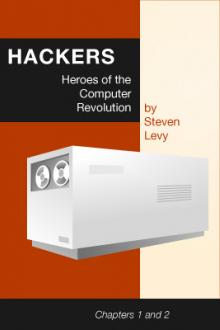Hackers, Heroes of the Computer Revolution by Steven Levy (i have read the book a hundred times .TXT) 📕

- Author: Steven Levy
- Performer: 0141000511
Book online «Hackers, Heroes of the Computer Revolution by Steven Levy (i have read the book a hundred times .TXT) 📕». Author Steven Levy
Dick Sunderland Chalk-complexioned MBA who believed that firm managerial bureaucracy was a worth goal, but as president of Sierra On-Line found that hackers didn't think that way.
Gerry Sussman Young MIT hacker branded "loser" because he smoked a pipe and "munged" his programs; later became "winner" by algorithmic magic.
Margot Tommervik With her husband Al, long-haired Margot parlayed her game show winnings into a magazine that deified the Apple Computer.
Tom Swift Terminal Lee Felsenstein's legendary, never-to-be-built computer terminal which would give the user ultimate leave to get his hands on the world.
TX-0 Filled a small room, but in the late fifties this $3 million machine was the world's first personal computer--for the community of MIT hackers that formed around it.
Jim Warren Portly purveyor of "techno-gossip" at Homebrew, he was first editor of hippie-styled Dr. Dobbs Journal, later started the lucrative Computer Faire.
Randy





Comments (0)